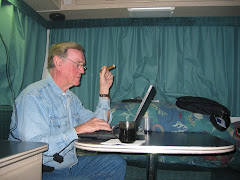
NOT LACKING FOR STONE THE WOOLOMBI CATHOLIC CHURCH HAS STOOD FORTRESSLIKE ON THE NORTH ROAD SINCE THE 1840S
EXCERPTED FROM MY BOOK: OUR SUMMER IN AUSTRALIA & NEW ZEALAND
The Hunter Valley region lies between 150 and 200km north of Sydney…about a
two hour drive. Today, one might compare it to Napa Valley, in relation to San Francisco. A premier wine growing region of many independent vineyards, numerous B & Bs, restaurants, balloon rides, music festivals, a few golf resorts and several wine tasting tours. That’s today. Yesterday was quite different.
In 1798, coal was discovered, by a British officer, Lt. Shortland, while in pursuit of escaped convicts. It was he who named the region after then Governor Capt. John Hunter, R.N., But it wasn’t until 1804, following a convict uprising near Sydney, that the subsequent Governor, Lt. Phillip King, R.N. decided to establish a penal colony at Newcastle, where second offenders would mine the coal and fell the abundant cedar timber, assuming the hard labor would deter others. It was harsh treatment, but ultimately not effective in its intended purpose. Fifteen years, later there were 850 assigned second offenders.
By the 1820s, settlers had expanded into the fertile areas, growing wheat and other
crops desired in Sydney, as well as raising the usual cattle and sheep. The only means of transporting their products and themselves to Sydney was by ship from Newcastle. Therefore, they petitioned the government for a road to be constructed, connecting them to Sydney, 150km away. A formidable task, across rivers and streams and over mountains, in an area offering no natural subsistence, much less shelter, using the most primitive tools. This, at a time when a bullock and a cart would make good time covering 15km in a day, and a man alone on horseback might make Sydney in four. But the scheme had the advantage of getting the convicts away from Newcastle, providing backbreaking labor in appalling conditions, and thereby serving the public good. With construction starting in 1826, and lasting for ten years, what become known as the Great North Road was built using convict labor, with as many as 750 prisoners working on the project at any one time, often still in leg irons weighing 10 to 12 pounds. Today, you can still travel across many of the 30 plus bridge sites, past culverts and walls cut from stone, some weighing over 600kg. As is our practice, Elysee and I branched off from the main road to the Hunter Valley, and followed the convict road to the village of Wollombi, about a twenty minute drive from the central grape growing region of the area.

2 comments:
Wonderful post, really great tips and advice. I was interested by your comment,
cheap flights to Dubai,
Sydney flights
Nice Blog
Post a Comment